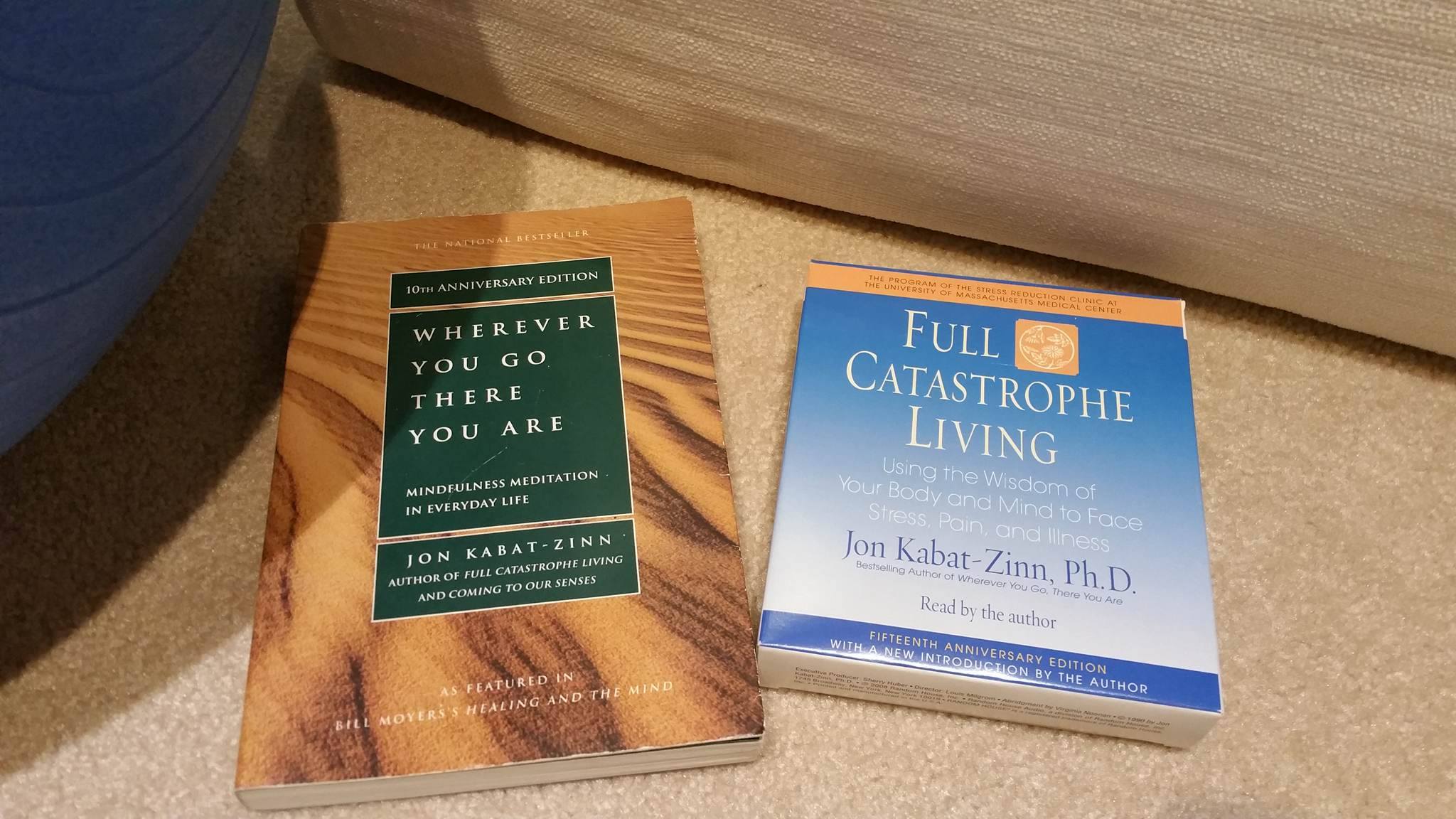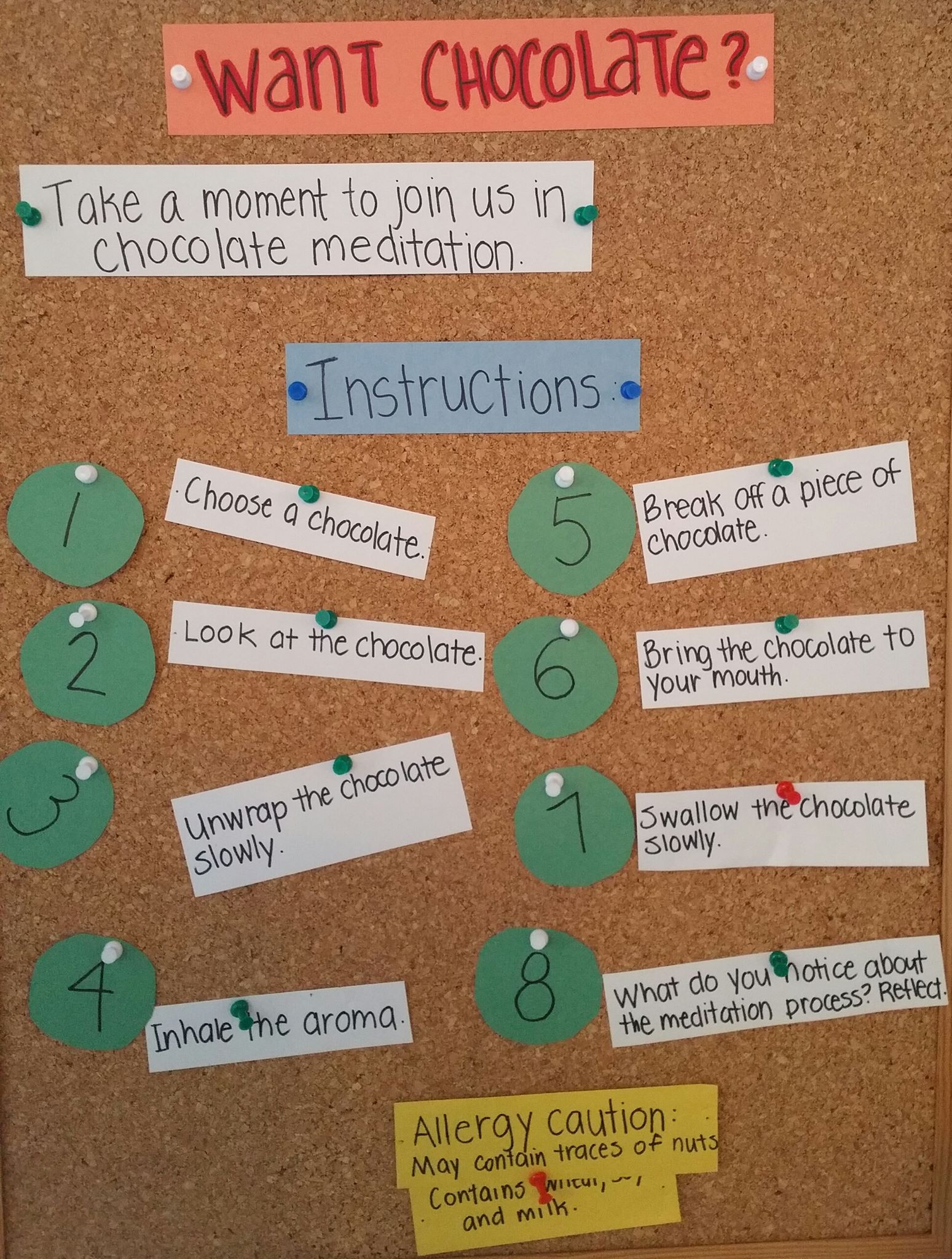Three years ago, I was going through a rough semester and my boyfriend's mother gave me a book called
Wherever You Go There You Are by Jon Kabat-Zinn, a stress reduction and mindfulness expert. Prior to this point, I'd thought of meditation as an abstract, somewhat wishy-washy concept. My grandfather would sit, seemingly unresponsive, for hours a day, meditating, and I neither had the time nor desire to pursue that. However, Kabat-Zinn is great at approaching the practice in a pragmatic, matter-of-fact tone that will appeal to anyone who doesn't have patience for mysticism, which mindfulness definitely isn't despite what many may think.

From what I understand, practicing mindfulness simply means going through the day's activities with a sense of purpose and awareness of the present moment. This awareness can include tuning in to the sounds, smells, and sights around us; focusing our thoughts on the present moment rather than dwelling on the past or future; and slowing down to consider each step of our actions instead of just brainlessly going through the motions of the day.
For those who see the world through a
Harry Potter lens as I do, I like to compare this process to how Harry practices clearing his mind before bed each night when he's taking Occlumency lessons in
Order of the Phoenix.
The main point I took away from reading Jon Kabat-Zinn is that mindfulness can happen anywhere, in any activity, for as long as we want. We can eat mindfully, sit on the subway mindfully, or walk to class mindfully. I bought an audiobook of
Full Catastrophe Living, also by Jon Kabat-Zinn, that includes guided meditations and deep breathing exercises that I listen to when commuting or winding down before bed. Five minute (or even one minute) guided meditations are also available for free all over the internet.

The other important point to note is that there's no wrong way to practice mindfulness. One of my friends finds meditating in quiet spaces very uncomfortable. I took part in a free eight week mindfulness series offered through Planned Parenthood and just fell asleep every single class. Typically, I still don't get anywhere without a guide either. However, I'd definitely encourage not giving up on the concept altogether without experimenting with different settings and methods first.
At U of T,
free mindfulness drop-ins are available weekly, held at the Multi-Faith Centre, the Athletic Centre, Hart House, and various colleges and faculties. A new series at
Victoria College just started running on Wednesdays from 4:30-5:30 p.m. Though I haven't used one before, I know apps, such as Headspace, exist to help with this practice as well. When I was in counselling, my counsellor recommended recording a guide yourself, or getting a loved one to do so, if that would make you more comfortable than listening to a stranger's voice. In any case, there are many options to play around with so you can make mindfulness fit your life in whatever way works best.
 From what I understand, practicing mindfulness simply means going through the day's activities with a sense of purpose and awareness of the present moment. This awareness can include tuning in to the sounds, smells, and sights around us; focusing our thoughts on the present moment rather than dwelling on the past or future; and slowing down to consider each step of our actions instead of just brainlessly going through the motions of the day.
For those who see the world through a Harry Potter lens as I do, I like to compare this process to how Harry practices clearing his mind before bed each night when he's taking Occlumency lessons in Order of the Phoenix.
The main point I took away from reading Jon Kabat-Zinn is that mindfulness can happen anywhere, in any activity, for as long as we want. We can eat mindfully, sit on the subway mindfully, or walk to class mindfully. I bought an audiobook of Full Catastrophe Living, also by Jon Kabat-Zinn, that includes guided meditations and deep breathing exercises that I listen to when commuting or winding down before bed. Five minute (or even one minute) guided meditations are also available for free all over the internet.
From what I understand, practicing mindfulness simply means going through the day's activities with a sense of purpose and awareness of the present moment. This awareness can include tuning in to the sounds, smells, and sights around us; focusing our thoughts on the present moment rather than dwelling on the past or future; and slowing down to consider each step of our actions instead of just brainlessly going through the motions of the day.
For those who see the world through a Harry Potter lens as I do, I like to compare this process to how Harry practices clearing his mind before bed each night when he's taking Occlumency lessons in Order of the Phoenix.
The main point I took away from reading Jon Kabat-Zinn is that mindfulness can happen anywhere, in any activity, for as long as we want. We can eat mindfully, sit on the subway mindfully, or walk to class mindfully. I bought an audiobook of Full Catastrophe Living, also by Jon Kabat-Zinn, that includes guided meditations and deep breathing exercises that I listen to when commuting or winding down before bed. Five minute (or even one minute) guided meditations are also available for free all over the internet.
 The other important point to note is that there's no wrong way to practice mindfulness. One of my friends finds meditating in quiet spaces very uncomfortable. I took part in a free eight week mindfulness series offered through Planned Parenthood and just fell asleep every single class. Typically, I still don't get anywhere without a guide either. However, I'd definitely encourage not giving up on the concept altogether without experimenting with different settings and methods first.
At U of T, free mindfulness drop-ins are available weekly, held at the Multi-Faith Centre, the Athletic Centre, Hart House, and various colleges and faculties. A new series at Victoria College just started running on Wednesdays from 4:30-5:30 p.m. Though I haven't used one before, I know apps, such as Headspace, exist to help with this practice as well. When I was in counselling, my counsellor recommended recording a guide yourself, or getting a loved one to do so, if that would make you more comfortable than listening to a stranger's voice. In any case, there are many options to play around with so you can make mindfulness fit your life in whatever way works best.
The other important point to note is that there's no wrong way to practice mindfulness. One of my friends finds meditating in quiet spaces very uncomfortable. I took part in a free eight week mindfulness series offered through Planned Parenthood and just fell asleep every single class. Typically, I still don't get anywhere without a guide either. However, I'd definitely encourage not giving up on the concept altogether without experimenting with different settings and methods first.
At U of T, free mindfulness drop-ins are available weekly, held at the Multi-Faith Centre, the Athletic Centre, Hart House, and various colleges and faculties. A new series at Victoria College just started running on Wednesdays from 4:30-5:30 p.m. Though I haven't used one before, I know apps, such as Headspace, exist to help with this practice as well. When I was in counselling, my counsellor recommended recording a guide yourself, or getting a loved one to do so, if that would make you more comfortable than listening to a stranger's voice. In any case, there are many options to play around with so you can make mindfulness fit your life in whatever way works best.
0 comments on “My Mindfulness Journey”